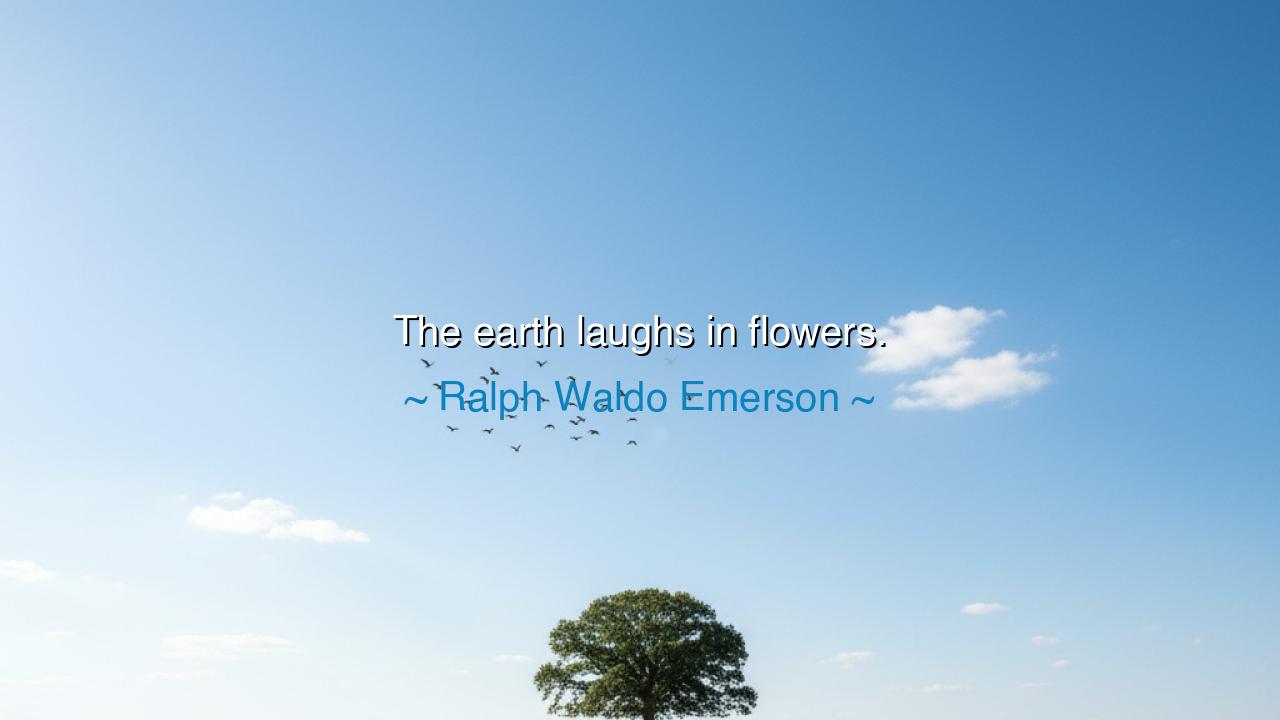
The earth laughs in flowers.






Ralph Waldo Emerson, the sage of Concord and voice of American transcendentalism, once wrote: “The earth laughs in flowers.” In this brief yet luminous phrase, he captured the mystery of beauty itself. For what are flowers if not joy made visible? They are the laughter of the earth, bright, unrestrained, springing forth from soil and root, declaring that even in a world of labor and sorrow, delight still bursts forth in color and fragrance.
The origin of this thought rests in Emerson’s transcendental belief that nature is the living garment of the divine. To him, every petal and every bloom was not merely decoration, but a revelation — the earth speaking in her own language. Where men might see only utility in fields and forests, Emerson saw spiritual poetry. When the earth clothed herself in blossoms, it was not necessity, but expression; not silence, but laughter. The flower is nature’s way of rejoicing, of reminding humankind that beauty is as essential as bread.
History offers countless witnesses to this truth. Consider the Japanese tradition of hanami, where people gather under cherry blossoms each spring. These blossoms last only a short time, yet they draw forth song, poetry, and celebration. For the Japanese, the blossoms are not mere plants but the earth’s laughter, reminding them of life’s fleeting beauty and the joy to be found in the present moment. Across centuries, entire cultures have paused their labor to listen to this laughter, understanding that life without beauty is no life at all.
Yet Emerson’s words also speak with power against despair. The earth suffers storms, earthquakes, droughts; mankind suffers wars, griefs, and burdens. And yet, even after winter, the flowers return. This is the earth’s laughter: a defiance of sorrow, a proclamation that renewal is always possible. The daffodil pushing through frost, the rose opening in silence, the wildflower blooming in a crack of stone — these are sermons without words, teaching us that joy can rise even from hardship.
There is also humility in this vision. The flower does not labor for glory, nor bloom to prove its worth. It opens simply because it must, because laughter cannot be contained. So too must we learn that our joy, our creativity, our love, need not always serve ambition or utility. Sometimes, it is enough simply to bloom, to add beauty to the world because beauty itself sustains life. Emerson teaches that in this act of blooming, we reflect the eternal spirit that animates the earth herself.
The lesson for us is clear: seek the flowers, and let them teach you. In times of toil, pause to notice the blossoms by the roadside, the petals drifting in the breeze. Let them remind you that the earth delights in giving, and that beauty is not a luxury but a necessity. Plant gardens where you can, not only to feed the body but to nourish the soul. Share beauty with others, in words, in art, in kindness, for these too are flowers in the field of life.
What must you do, then? Walk gently, observe closely, and train your heart to hear the laughter that surrounds you. Do not be blind to the small gifts — the bloom on a windowsill, the fragrance of spring, the color that bursts after rain. Let them become reminders that even in hardship, the earth continues to rejoice, and invites you to join her.
Thus, let Emerson’s words endure as a guide: “The earth laughs in flowers.” Carry them with you when days grow heavy. For as long as the earth blooms, laughter still resounds in creation, and no darkness can silence it. The flowers will rise again, and through them, the earth herself will teach you to hope, to rejoice, and to live.






AAdministratorAdministrator
Welcome, honored guests. Please leave a comment, we will respond soon